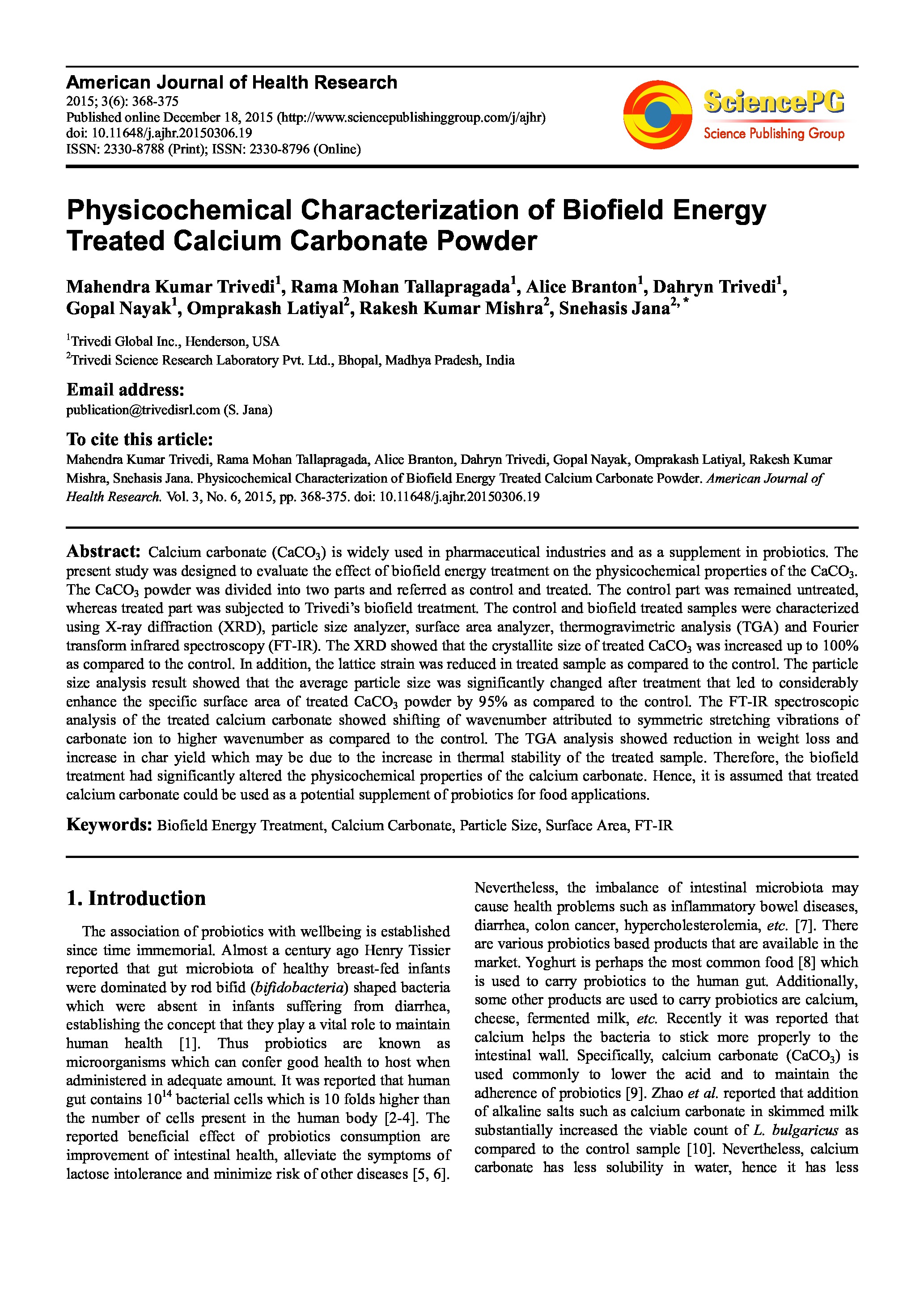Physicochemical Characterization of Biofield Energy Treated Calcium Carbonate Powder
Affiliation
Trivedi Global Inc.; Trivedi Science Research Laboratory Pvt. Ltd.
Main category
Natural Sciences (Analytical Chemistry, Method Development (Chemistr)
Abstract
Calcium carbonate (CaCO3) is widely used in pharmaceutical industries and as a supplement in probiotics. The present study was designed to evaluate the effect of biofield energy treatment on the physicochemical properties of the CaCO3. The CaCO3 powder was divided into two parts and referred as control and treated. The control part was remained untreated, whereas treated part was subjected to Trivedi’s biofield treatment. The control and biofield treated samples were characterized using X-ray diffraction (XRD), particle size analyzer, surface area analyzer, thermogravimetric analysis (TGA) and Fourier transform infrared spectroscopy (FT-IR). The XRD showed that the crystallite size of treated CaCO3 was increased up to 100% as compared to the control. In addition, the lattice strain was reduced in treated sample as compared to the control. The particle size analysis result showed that the average particle size was significantly changed after treatment that led to considerably enhance the specific surface area of treated CaCO3 powder by 95% as compared to the control. The FT-IR spectroscopic analysis of the treated calcium carbonate showed shifting of wavenumber attributed to symmetric stretching vibrations of carbonate ion to higher wavenumber as compared to the control. The TGA analysis showed reduction in weight loss and increase in char yield which may be due to the increase in thermal stability of the treated sample. Therefore, the biofield treatment had significantly altered the physicochemical properties of the calcium carbonate. Hence, it is assumed that treated calcium carbonate could be used as a potential supplement of probiotics for food applications.
DOI
10.18147/smn.2017/paper:598
Do you have problems viewing the pdf-file? Download paper
here
If the paper contains inappropriate content, please
report the paper. You will be redirected to the landing page.
